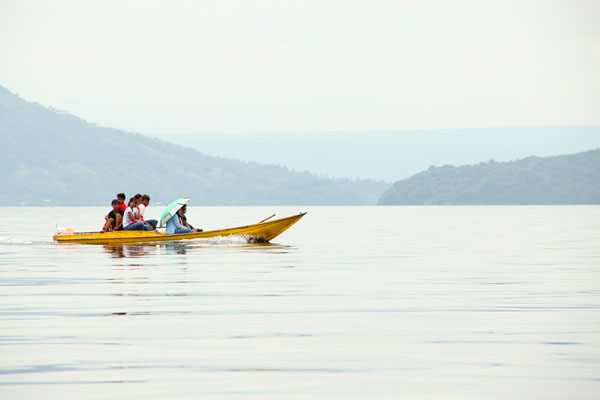
A marine environmental group is appealing to the public to protect the Filipino favorite tawilis fish after it was declared as an endangered species.
The International Union for Conservation of Nature (IUCN) listed tawilis (sardinella tawilis) as endangered in its assessment on February 28, 2017.
Tawilis, the only freshwater sardine in the world, is an endemic species of sardines that can only be found in Taal Lake in the Philippines. It is an invasive fish species introduced to local waters way back in the 1950’s.
Marine Wildlife Watch of the Philippines posted an infographic showing how the population of tawilis decreased by more than 50 percent through the years.
Predation and competition with introduced species, use of illegal fishing gear, pollution and over-fishing are the main reasons for the tawilis’s dwindling numbers, according to IUCN.
Have you had tawilis lately? #EndangeredbutnotProtected #SavetheTawilisIUCN status assessment report declaring the…
Posted by Marine Wildlife Watch of the Philippines on Tuesday, January 22, 2019
According to the infographic: in 1998, there were 1,672 metric tons of tawilis and then it decreased to 240 metric tons in 2005 until only 107 metric tons were left in 2010.
IUCN also said that tawilis is vulnerable to pollution from nearby aquaculture, domestic waste and mismanaged tourism.
The government therefore lacked implementation in its environmental laws, particularly the ban on illegal fishing gears, according to its report.
“Despite local laws which ban active fishing gears (e.g., motorized push nets, beach seines and ring nets), these measures are still being used and effort has increased in the most recent years available (1998 – 2014: Mutia et al. 2011). Therefore, it is recommended that local government agencies should be more active in the implementation of various laws on lake management and conservation (Mutia et al. 2011),” its report stated.
The marine group emphasized the importance of tawilis, which can be cooked in different ways like skewered, boiled or fried in Filipino cuisine.
“The endemic tawilis needs your help, once they’re all gone, they’re gone for good,” the group said.
“So tell your family and friends that they are officially endangered and in need of immediate conservation interventions for them to thrive,” it added.
Saving tawilis
In 2005, when fishermen started to notice the scarcity of tawilis, the government launched a major project called Conservation Program for the Endemic Freshwater Sardine.
This project comprises regional government agencies and representatives of the University of the Philippines-Los Baños.
The next year, the proliferation of illegal fishing boats and the use of suro, a destructive fishing method, became a problem among the locals.
That time, the Kilusan ng mga Maliliit na Mangingisda sa Lawa ng Taal or KMMLT warned that suro, which means scouring or scrubbing, will cause the extinction of the sardines.
This fishing method uses fine mesh nets on either metal or bamboo frames used to scour the bottom of the lake. However, this catches small fingerlings or baby fishes and other marine species.
In 2016, local officials saw the slow degradation of the lake environment due to the boom of the aquaculture industry.
They enacted the Unified Rules and Regulations for Fisheries to put strict regulations on aquaculture and other projects of the 24,000-hectare Taal Volcano Island National Park, the home of the tawilis.
Rules of conservation for the lake fall under the National Integrated Protected Areas System or Nipas. Protected areas placed under Nipas are classified as follows:
- Strict nature reserve;
- Natural park;
- Natural monument;
- Wildlife sanctuary;
- Protected landscapes and seascapes;
- Resource reserve;
- Natural biotic areas; and
- Other categories established by law, conventions or international agreements which the Philippine Government is a signatory.
The Department of Environment and Natural Resources is the agency tasked to oversee the sites placed in this system.









